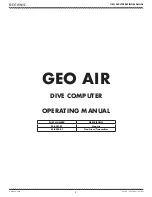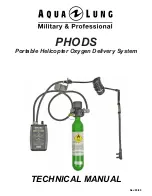
1-8
1 Safety Information
1.3.5
Information on Laser Class 2 for PSV-500 Xtra
The properties of laser light are different from those of conventional light
sources. Due to the low divergence, laser light is generally extremely intense.
When handling lasers, always take great care to make sure that the direct or
reflected beam of the lasers do not enter anyone's eyes.
The instrument is equipped with one invisible and two visible lasers as light
sources: the infrared object laser (wavelength 1 550 nm), the green pilot laser
(wavelength 520 nm) and the red laser of the distance sensor (geometry
laser, wavelength 670 nm). The three laser beams are superimposed directly
on each other.
When you switch on the instrument, the geometry laser is switched off while
the pilot laser and the object laser are switched on. You can switch on the
geometry laser if required but thereby the pilot laser will be switched off.
Technical precautions have been taken to ensure that at any time only one of
the visible laser beams is emitted.
•
The optical output power of the invisible laser beam (of the object laser)
emitted from a scanning head is less than 10 mW provided the equipment
is used in the manner for which it was intended. The wavelength is
beyond the visible and beyond the near infrared range (> 1 400 nm). The
invisible laser beam is eye-safe; in comparison with the visible pilot laser it
represents no additional hazard. The power of both visible lasers is less
than 1 mW. This means that the instrument conforms with
Laser Class 2
.
With laser class 2, it is usually assumed that eyes are protected by
prevention mechanisms including the blink reflex. This reaction offers
appropriate protection under reasonably foreseeable conditions. This
includes the use of optical instruments (magnifying glasses or binoculars)
for observing the laser beam. Under any operating conditions, there is no
risk to skin.
•
Do not attempt to open the housing of the instrument which contains the
laser unit as you will be exposed to a higher level of laser radiation (laser
class 3R) that is potentially hazardous.
•
If you use operating and adjusting devices or perform procedures other
than those specified here, this may result in hazardous radiation
exposure.
Содержание PSV-500-3D
Страница 19: ...2 4 2 Introduction ...
Страница 55: ...4 10 4 Measuring ...
Страница 63: ...6 6 6 Troubleshooting ...
Страница 97: ...A 12 A Optional Accessories ...
Страница 101: ...C 2 C Declaration of Conformity ...














































